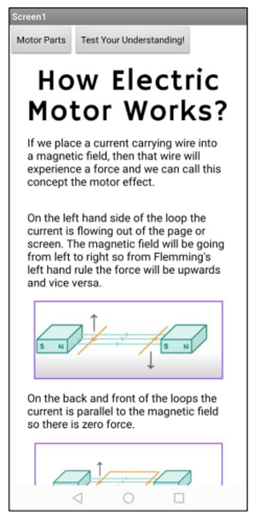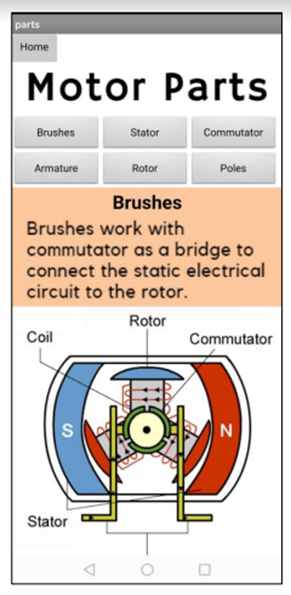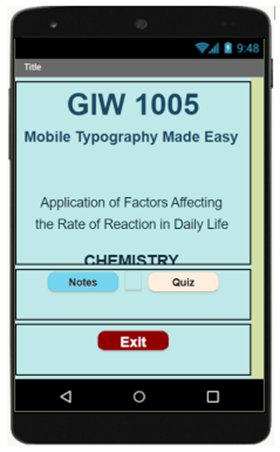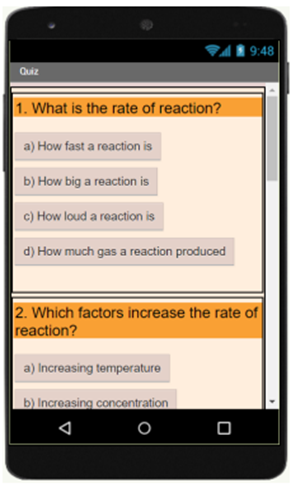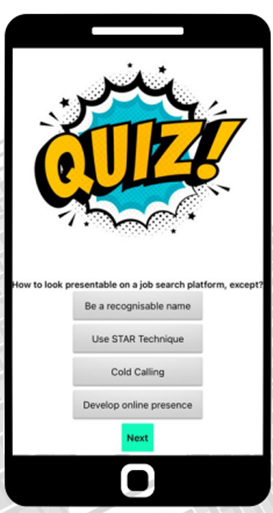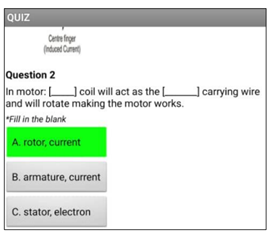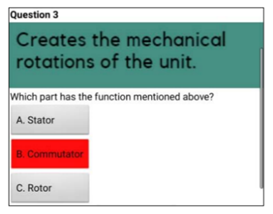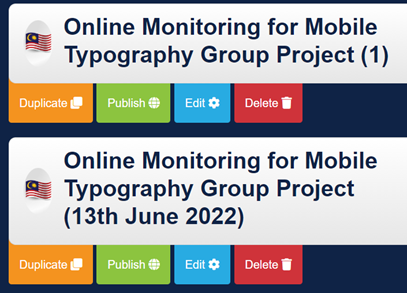
Description of the course
The course offers practical hands-on experience in creating and styling their mobile typographic content interactively using typographic tools. The key design elements of typography covered are typeface, fonts, line length, leading, kerning and tracking. In addition, the course builds knowledge on typographic developments in Malaysia. The course takes place virtually.
Description of the participants
The course targets students enrolled full-time in the Bachelor of Computer Science program. In semester 2 of the 2021 – 2022 academic years 30 students attended the course.
Description of gamified design thinking activities
Design thinking activities, and more specifically ideation and prototyping, were deployed in the context of the class project. The pedagogical approach applied in the course was project-based learning.
The objective of the activities was to build student capacity to use typography with interactive tools in text editors and mobile apps. More specifically, the goal of the course was to demonstrate how design thinking can contribute to project planning and execution and to facilitate the design of an e-learning mobile application using the MIT App Inventor platform.
Students were divided into groups of 3 individuals. A total of 10 groups were formed.
Step 1. Preparation.
Students familiarized themselves with MIT App Inventor. They discussed the benefits of mobile applications. This activity was completed by the end of week 9.
Step 2. Team building.
Students undertook a personality text and an innovation pre-test. The goal of the tests was to facilitate the assignment of team roles in the implementation of their project. Based on the results, students created a group contract for facilitating collaboration. This activity was completed by week 10 of the course.
Step 3. Project discovery.
Students worked with their team members to select a topic for their work within the larger scope of typography. They were instructed to describe the topic in a concise text. They further developed a presentation of the topic using pictures, videos and animations.
Subsequently, students performed research on user needs applying empathy techniques. Each team created a quiz with at least 5 questions to test the user’s knowledge on the topic. They used the quiz to perform at least 2 discussion sessions and to publish the results on the ICT-INOV digital learning platform.
Step 4. Implementation and prototyping.
Students implemented their project by developing a prototype. This activity was completed by week 12 of the course.
Step 5. Evaluation and reflection.
Students undertook an innovation post-test. The reflected on the results of their work. They presented their work to the class. This activity was completed by week 13 of the course.
